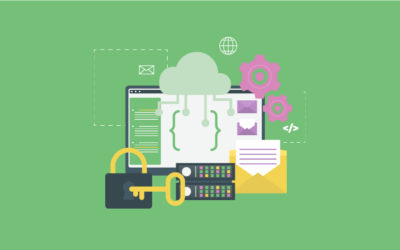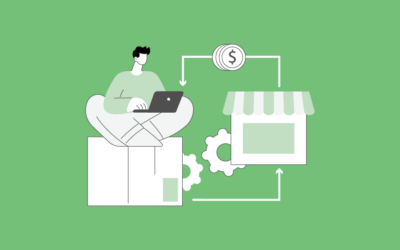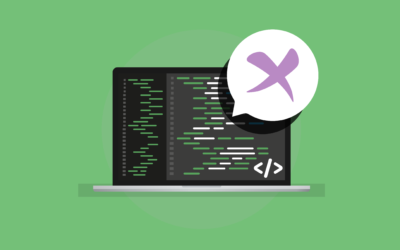Charging Clients for Automated Solutions

Charging Clients for Automated Solutions

In 2008, I started a law firm in the UK with the principal objective of leveraging my experience of document automation for clients in B2B software and IT services organisations, which I ran that firm for 10 years. I came from a corporate legal team so I did not start with a following of existing clients. What did I learn about charging for automated contracts?
1. The business model is sustainable and profitable.
Fee income from contract automation was at least as good as fee income from traditional legal work. More importantly, for a solo lawyer, I won loyal clients with repeat work. I didn’t have to spend too much time finding new clients.
2. It’s still legal services
I confused some potential clients with my early pitch. I remember one organisation asking if I was from a software company or a law firm. I put so much focus on the technology, I neglected to be clear that the core business was still legal services. None of my clients bought a tech solution, but almost all of them got a tech solution.
3. Use tech to customise, not standardise, legal work.
My core work is drafting technology contracts. Most of my clients were in-house lawyers in large companies. They could access precedent agreements from other (larger) law firms or subscription services. It’s inherently tricky (and unwise) to deploy standard contracts in complex commercial transactions. My clients needed tailored contracts for each project, but they had neither the time nor the budget to pay for a lawyer to draft them. My business expanded when I equipped clients to generate tailored contracts without manual drafting.
4. Subscription-based fees.
My typical fee model was a fixed fee for supplying an automated contract template plus a regular subscription for maintaining and supporting the template. The initial fixed fee was not a loss-leader. I typically charged 25% more for an automated template than a static Word document. Often, it would not have been possible to use a static Word document, but the point I’m making is that I could charge more for the value of an automated template. If an initial fixed fee plus a follow-on subscription sounds like a familiar model, remember my clients were in the software business. They understood the concept of maintenance and support.
5. Charge for legal work, not technology.
When clients needed software to run my contract templates, I did not profit from supplying the software. I passed on any software cost without markup. Usually, I encouraged the clients to buy the software directly from the vendor. It’s important to know what business you are in.
6. It’s not for everyone.
I used tech to create tailored contracts at the complex end of the spectrum for knowledgeable clients who were frequent consumers of legal services. I did not have to explain my legal content, or guide clients in unusual one-off situations. I did not try to automate legal advice more effectively delivered by a human with intuition and sensitivity. Lawyers have a duty to act in a client’s best interests. We must recognise when LegalTech is not sufficient. A successful business model (and a good professional indemnity insurance track record) depends on matching the solution to the client. Turn away work that doesn’t fit – there’s enough work out there.
7. A fee-per-use model never seemed to work.
In my opinion, I don’t think there’s a conceptual bar to charging a fee-per-use model for automated documents, but I never found a good use case for it. It would have been more complicated to calculate, and I think it would have felt like a tax on transactions. I didn’t want anything to discourage optimal use of the templates. Nobody asked me for that kind of model. A fee-per-use was also contrary to the market norms in the software industry I served. It would have seemed counter-intuitive in their supply chain.
Written by Charles Drayson
In 2008, I started a law firm in the UK with the principal objective of leveraging my experience of document automation for clients in B2B software and IT services organisations. I ran that firm for 10 years. I came from a corporate legal team so I did not start with a following of existing clients. What did I learn about charging for automated contracts?
1. The business model is sustainable and profitable.
Fee income from contract automation was at least as good as fee income from traditional legal work. More importantly, for a solo lawyer, I won loyal clients with repeat work. I didn’t have to spend too much time finding new clients.
2. It’s still legal services
I confused some potential clients with my early pitch. I remember one organisation asking if I was from a software company or a law firm. I put so much focus on the technology, I neglected to be clear that the core business was still legal services. None of my clients bought a tech solution, but almost all of them got a tech solution.
3. Use tech to customise, not standardise, legal work.
My core work is drafting technology contracts. Most of my clients were in-house lawyers in large companies. They could access precedent agreements from other (larger) law firms or subscription services. It’s inherently tricky (and unwise) to deploy standard contracts in complex commercial transactions. My clients needed tailored contracts for each project, but they had neither the time nor the budget to pay for a lawyer to draft them. My business expanded when I equipped clients to generate tailored contracts without manual drafting.
4. Subscription-based fees.
My typical fee model was a fixed fee for supplying an automated contract template plus a regular subscription for maintaining and supporting the template. The initial fixed fee was not a loss-leader. I typically charged 25% more for an automated template than a static Word document. Often, it would not have been possible to use a static Word document, but the point I’m making is that I could charge more for the value of an automated template. If an initial fixed fee plus a follow-on subscription sounds like a familiar model, remember my clients were in the software business. They understood the concept of maintenance and support.
5. Charge for legal work, not technology.
When clients needed software to run my contract templates, I did not profit from supplying the software. I passed on any software cost without markup. Usually, I encouraged the clients to buy the software directly from the vendor. It’s important to know what business you are in.
6. It’s not for everyone.
I used tech to create tailored contracts at the complex end of the spectrum for knowledgeable clients who were frequent consumers of legal services. I did not have to explain my legal content, or guide clients in unusual one-off situations. I did not try to automate legal advice more effectively delivered by a human with intuition and sensitivity. Lawyers have a duty to act in a client’s best interests. We must recognise when LegalTech is not sufficient. A successful business model (and a good professional indemnity insurance track record) depends on matching the solution to the client. Turn away work that doesn’t fit – there’s enough work out there.
7. A fee-per-use model never seemed to work.
In my opinion, I don’t think there’s a conceptual bar to charging a fee-per-use model for automated documents, but I never found a good use case for it. It would have been more complicated to calculate, and I think it would have felt like a tax on transactions. I didn’t want anything to discourage optimal use of the templates. Nobody asked me for that kind of model. A fee-per-use was also contrary to the market norms in the software industry I served. It would have seemed counter-intuitive in their supply chain.
Written by Charles Drayson
More Weekly Articles



















